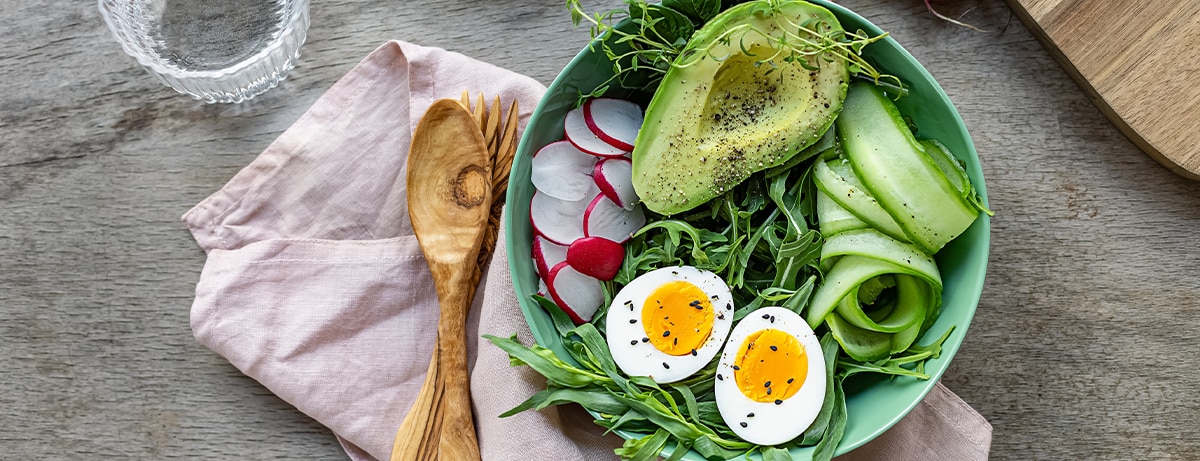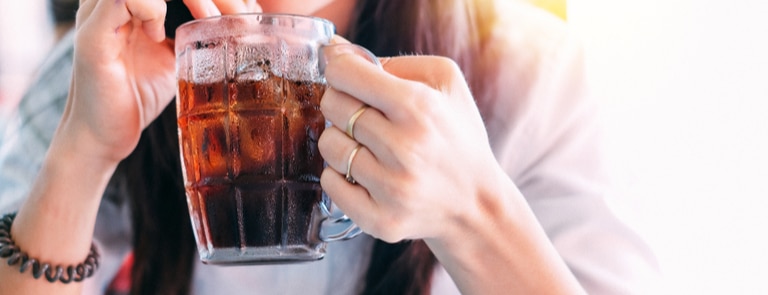10% off £35
Code:SAVE
A complete guide to alcohol

Ever wondered how many units are in a glass of wine? Use our guide to find out how many units are in your favourite tipple and even explore some of the best non alcoholic alternatives out there.
A glass of Malbec with dinner or a pint of beer at the pub may both hit the same spot, but not all alcohol is equal, especially when it comes to units.
It can all get a bit confusing – so we have put together this quick guide to help you better understand the alcohol content of your favourite tipples.
What are alcohol units?
Alcohol units were first introduced in the UK in 1987 to help people keep track of their drinking. They are a simple way of sharing the quantity of pure alcohol in our drinks to consumers.
One unit contains 8g or 10ml of pure alcohol, which takes around 1 hour for the average adult to process through their body. In theory, little to no alcohol should remain in the blood of an adult who has consumed one unit after an hour.
The size of a drink is also a factor when determining how many alcohol units it has, e.g. a pint of strong lager contains around 3 units of alcohol, but a pint of low-strength lager has roughly 2 units.
How many alcohol units is safe to drink?
Although most people believe that alcohol is fine to consume in moderation, it’s useful to know what is deemed safe.
To minimise health risks from alcohol (if you drink majority of the weeks) then the following is recommended:
- Both men and women are advised to not drink more than 14 units a week on a regular basis
- If you do drink up to 14 units a week, try to spread it over 3 or more days
- Try having several drink-free says a week if you want to cut down
- Do not drink if you are pregnant
How much alcohol is too much?
Alcohol is so ingrained into our society that it can be hard to how much is too much alcohol. The unit system gives you a clear-cut answer and can help you determine if you need to re-evaluate your drinking habits.
How many alcohol units are in a glass of wine?
Mmm wine, everyone’s got a favourite – rosé, red, white… there’s a fruity glass for every occasion. And while some people fiercely advocate the health benefits of a glass of red every night, would that fit into the recommended number of alcohol units per week?
Let’s find out how many units are in a glass of wine...
| Size | Type | Measure | Unit |
|---|---|---|---|
| Small glass | white / red / rosé wine | 125ml, ABV 12% | 1.5 units |
| Medium glass | white / red / rosé wine | 125ml, ABV 12% | 2.1 units |
| Large glass | white / red / rosé wine | 125ml, ABV 12% | 3 units |
How many units of alcohol in a bottle of wine?
A 750ml bottle of white / red / rosé wine (ABV 12%) contains 9 units – not far off the recommended weekly alcohol units – so be careful.
Hold on, what is ABV?
You’ve probably already seen it on labels of your favourite alcohol, but what does ABV mean?
Alcohol By Volume is a measure of the amount of pure alcohol in the total volume of liquid in any alcoholic drink, e.g. a bottle of wine that says 13.5% ABV will have 13.5% pure alcohol, so a 750ml bottle would contain 101.25ml of pure alcohol.
If any alcoholic drink doesn’t have its alcohol unit listed, here’s how to work it out using ABV:
- Strength (ABV) x volume (ml) ÷ 1,000 = units
- 13 (ABV) x 750 (ml) ÷ 1,000 = 9.75 units
Love wine but want to cut down?
Here’s a low-down on the best non-alcoholic wine:
- Sparkling wine: All the fun of sparkly champagne without the hangover the next day, Thomson & Scott Noughty Alcohol Free Organic Sparking Wine is definitely ‘naughty’ yet nice! This vegan, alcohol-free wine is made with organic Chardonnay grapes and has the crisp, elegant taste you crave. Go on, pop that cork.
- Rosé wine: Whether you’re alcohol-free or trying to cut down, it doesn’t mean you have to forgo a fruity rosé wine on a warm summer’s day. Try Zera Alcohol Free Organic Rosé – it’s made in France from organic grapes for a unique and elegant taste.
- White wine: Love to relax with a crisp, refreshing glass of Chardonnay? Zera Alcohol Free Organic Chardonnay can sort you right out! Made in France with organic Chardonnay grapes, this wonderful alcohol-free white wine is a must-try.
- Red wine: Another one of Zera’s beauties, Zera Alcohol Free Organic Cabernet Sauvignon replicates the one of the world’s greatest red wines well. With a lower calorie count than regular wine and that dry finish you expect from Sauvignon Blanc, this is one alcohol-free glass of wine you’ll love.
- Mulled wine: Love a mulled wine on a cold winter’s night? Most of the rich fruity flavours have nothing to do with wine – so why not try an alcohol-free version? Rochester Organic Mulled Berry Punch Drink has all the spicy, berry flavours you want in a mulled wine, just without the wine – perfect!
Alcohol units in beer and cider
Whether it’s a quick pint in your local or a few fruity ciders on a sunny day, everyone’s got a favourite beer or cider. Do you know how many alcohol units they contain though?
Let’s have a look at the most popular beers and ciders and how many units they contain.
Ales & Bitters
- 1 pint of BrewDog Punk IPA (5.6%) contains 8 units
- 1 pint of Boddingtons Pub Ale (4.7%) has 2.6 units
Beer
- 1 pint of light beer, e.g. Ringwood Razorback Amber Ale (3.6%) has 2 units
- 1 pint of average strength beer, e.g. Carling (4%), will set you back 2 units
- 1 pint of stronger beer, e.g. Stella Artois (4.8%), contains 4 units
Cider
- 1 pint of normal cider, e.g. Strongbow (4.5%) has 3 units
- 1 pint of fruity cider, e.g. Rekorderlig Strawberry-Lime (4%) contains 2 units
Why not try a low alcohol beer?
Sometimes it’s more about the ritual of sitting down with a beer at the end of a long day, rather than the actual alcohol content. If you want to cut down on your boozy drinks, great-tasting low-alcohol beers could be the solution.
Big Drop Brewing Co. make a delicious range of craft beers with just 0.5% ABV lager, pale ale and stout. Each 330ml can has less than 0.2 units!
Alcohol units in spirits
Are you team cheeky G&T? Or do you prefer a fancy cocktail? A lot of our favourite drinks contain a spirit or two, but do you know just how much alcohol the likes of vodka, rum and gin contain? Here’s a low-down on the most popular spirits.
- Single gin and tonic (ABV 40%) contains 1 unit
- Most spirits contain around 40% ABV so a good rule is to count each shot as 1 unit – it’s better to overcompensate than undercompensate!
There’s no denying that some of these drinks taste amazing, so much so that they don’t even taste alcoholic. So, why not try an alcohol-free or low alcohol version to see if it hits the spot? These drinks are a great alternative for pregnant ladies and designated drivers, as well as those just wanting to cut down.
If you think you’re drinking too much, here’s 3 ways to reduce your alcohol intake.
Non-alcoholic gin
There’s nothing quite like a good old G&T! All those tasty, delicate botanicals – it just screams summer nights on the patio. You’ll be pleased to know you can enjoy the same great tastes with none of the alcohol.
Here’s a few of our favourites:
- GinISH & tonic: a delicious ready-made 0% alcohol G&T perfect for picnics and quick, casual drinks in the garden, they do a nice Spritz too!
- Seedlip specialise in tasty, calorie- and alcohol-free gin alternatives, choose from aromatic Spice, herbal Garden and citrus Grove.
Non-alcoholic rum
Another wonderful creation from ISH is their 0.5% ABV Rumish rum alternative with the familiar flavour you love and the perfect punch. Now, where is that coke…
Alcohol-free infusions
If you always gravitate to the cocktail menu, we have a sophisticated alternative – bye bye Shirley Temples! Kolibri is designed for those of you who demand high-quality drinks with delicious adult flavours and considered calorie counts – because having a simple soft drink isn’t quite the same.
Try their scrumptious flavours:
- Strawberry & Basil
- Cardamom & Chilli
- Elderflower & Lime
- CBD-infused Dark Forest
If you want some more inspiration check out Festive alcohol-free cocktail recipes and Healthy alternatives to your usual alcoholic tipple.
And please reach out to professionals if you think your alcohol consumption is too high or getting out of hand.
Last updated: 7 July 202s
- https://www.nhs.uk/live-well/alcohol-support/calculating-alcohol-units/
- https://alcoholchange.org.uk/alcohol-facts/interactive-tools/unit-calculator
- https://www.drinkaware.co.uk/understand-your-drinking/unit-calculator
- https://www.drinkaware.co.uk/alcohol-facts/alcoholic-drinks-units/how-much-is-too-much/
Related Articles
Shop by wellness goal
Sign up for exclusive offers
Plus, get expert advice to support your health & wellness straight to your inbox when you sign up to Holland & Barrett emails.
Read our
privacy policy














